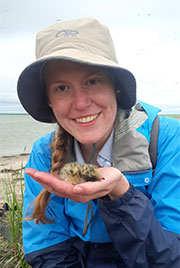So you'd like to see a warbler...
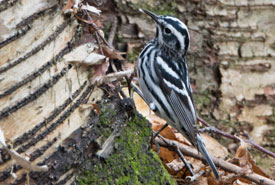
Black-and-white warbler (Photo by NCC)
I like birding at just about any point of the year, but spring birding brings a certain excitement after a long winter season. Throughout Canada, warblers and other songbirds are starting to flock to landscapes that were recently quiet. Many are nearing the end of long-distance trips that brought them from the tropics to the more northern reaches of their ranges. It is also at this time of year that sleepy nature tourism sites start buzzing with birders and other nature revellers.
If you are indeed thinking about planning your next birding trip to see some of the newly arrived long-distance migrants, then there are some types of locations where you may have the greatest success. To find these places there are two terms to pay attention to: “fallout” and “migrant trap.”
What’s a fallout?
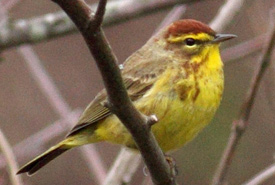
Palm warbler (Photo by Marshall Faintich)
A fallout is a phenomenon where a weather event, such as a thunderstorm, will cause migrating birds to rapidly abandon their flight (“fallout” of the sky) and seek temporary cover on land. For migrants crossing the great lakes, Point Pelee National Park and Pelee Island are spots where fallouts have occurred in the past.
Each year, birders that attend the spring Festival of Birds at Point Pelee National Park hope for a fallout to boost their festival species lists. And some years, such as 2015, the weather delivers. However, the phenomena of a fallout is not easily predictable, and requires a birder to have a flexible schedule.
More on migrant traps
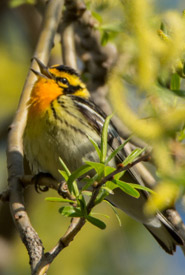
Blackburnian warbler (Photo by Claire Elliott/NCC staff)
A more reliable spot to bird would be a “migrant trap.” Not as sinister as it sounds, a migrant trap is a site where factors such as habitat, food availability, topography and local climate may influence weary migrants to stop over to rest and refuel.
In addition to having fallouts, the peninsula that is Point Pelee is great for collecting spring migrants (and huge flocks of birders) needing rest after crossing Lake Erie, and fall migrants about to start their water crossing. Some migrant traps have gained their reputation by serving as an oasis to migrating birds. Central Park in New York City is known to be a hotspot for migrating warblers because it is the only sizable greenspace for kilometres around.
In addition to these well-known migrant traps, there are bound to be traps local to you. Take some time this spring to think like a migrating bird and explore your local nature.
Be a respectful birder
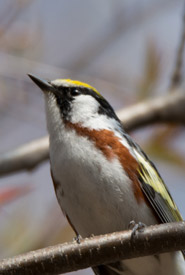
Chestnut-sided warbler (Photo by Claire Elliott/NCC staff)
As more migrants arrive and we head into breeding season, it is always good to remind ourselves to follow ethical birding practices such as not disturbing tired, hungry migrants and their nests by lingering to close for too long, or avoiding disturbing resting birds. Patience and respect for the birds and all of nature is often well rewarded in the field.
The best way we can continue to enjoy a colourful and rousing spring migration is to protect the birds and the resources and habitats that they frequent.

